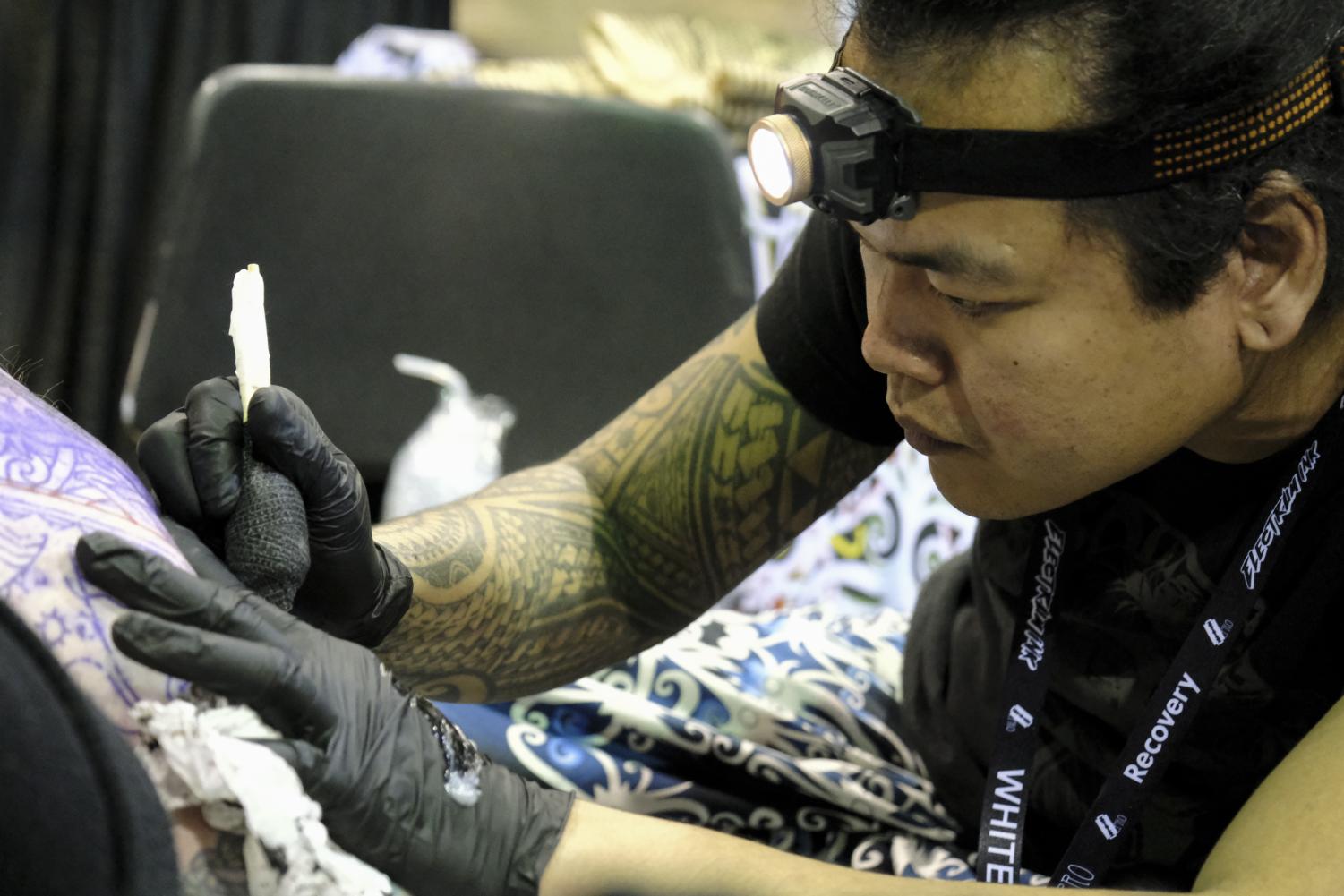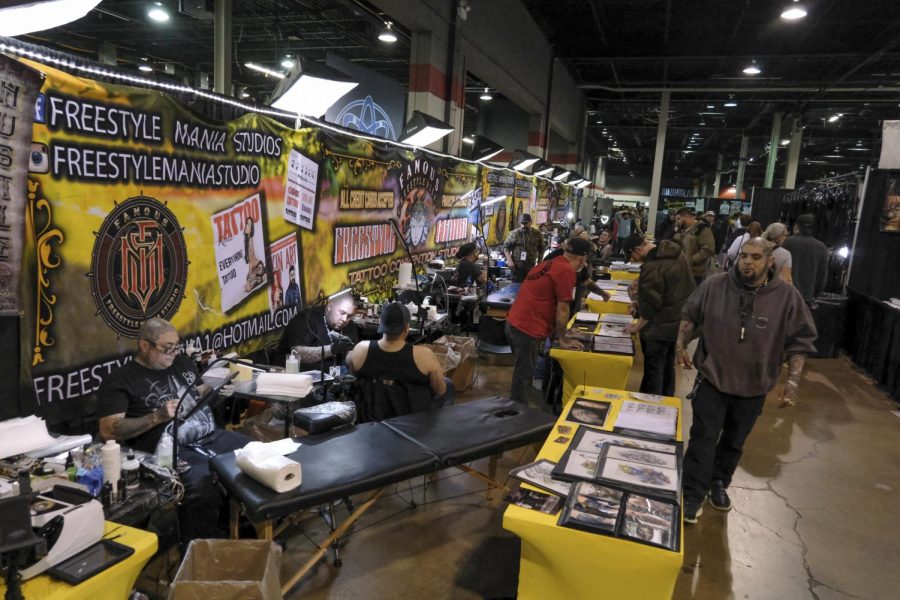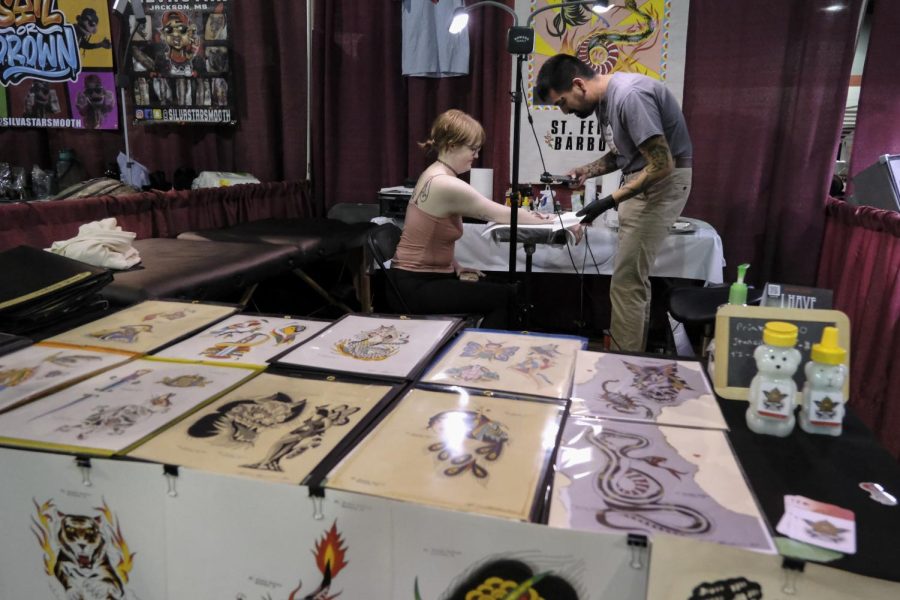Villain Arts 13th Annual Chicago Tattoo Arts Festival features cultural tattooing
March 21, 2023
Cultural tattoos can display a person’s rank or status, tell stories or honor religion and traditions.
For one artist, the method itself is the story of his culture.
Clarke Gable Anak Dablin, from Borneo, an island in the Malay Archipelago in Southeast Asia, uses a special hand tap technique, an ancient tradition that existed long before machines.
He was one of the tattoo artists at the13th Annual Chicago Tattoo Arts Festival, which ran March 17 to 19 just outside of Chicago.
The festival housed both large and small tattoo shops at the Donald E. Stephens Convention Center in Rosemont, including working artists and vendors; different tattoo styles were also available to those wanting to be inked.
Hand tap tattooing is a two-step process, beginning with outlining the tattoo with sticks bound by tape to form one stick with a needle at the end that is used to poke color in to define the outline.
Next, two different sticks are used to fill in the tattoo by tapping ink into the skin while a second person, called a stretcher, holds the skin taut.
“The two sticks are called tatok in the local language. One stick has a needle attached and the other is the hammer,” Dablin said.
Samuel Pang was Dablin’s stretcher at the festival. Pang, a Fulbright scholar, met Dablin and his wife, fellow Fulbright scholar Cassi Romanowski, while pursuing his fellowship studies during his first year in Malaysia.
“The stretcher helps to flatten and stretch the skin to make sure the body part is stable to help pack in more ink and help with precision,” Pang said.
Hand tap tattoos pierce fewer layers of skin than machine tattooing does, and the tattoo heals faster due to less trauma to the skin, Pang said.
Dablin has been tattooing for more than 10 years and learned his craft from Jeremy Lo, who learned from Borneo elders. Today, there are barely any elders left on the island, he said. Those who are left live deep in the jungle.
Hundreds of years ago, boys were tattooed at 11, 12 or 13-years-old as a rite of passage beginning with “bunga terung” tattoos, one on each shoulder.
Dablin said the bunga terung are a daily reminder of new beginnings and responsibility for family that is carried on your shoulders.
“Borneo people get a full set of tattoos. They travel to other villages to get more and more. When they come back they are the baddest of the baddest ever in their village,” Dablin said. “It gives them strength and importance. People know this person travels well and comes back safely.”
For Dablin, the revival of hand tap tattooing is significant.
“When the British invaded us, they tried to kill the culture,” Dablin said. “They got rid of paganism, made everyone into Christians and most of the elder people stopped tattooing. They said no more tattooing or head hunting; you have to go to church. It is savage to be tattooed.”
Tattooing continues to be a dying art in Borneo. Now, kids don’t want to learn to tattoo and want to live in the city, Dablin said.
“People like me got interested in this, and a few of my friends began doing hand tapping tattoos; we are trying to revive it in a modern world,” he said.
Like the Borneo hand tapping style, tattooing in Mexico is an ancient practice.
Fermin Barbosa is from Salvatierra, a city in Guanajuato, Mexico, and he said his cultural tattoo work comes from Mexican folk art imagery.
“It’s another way for somebody to identify more strongly with their culture,” Barbosa said about the tattooing style. “I definitely feel like it’s empowering for the individual.”
Barbosa is inspired by Mexican pottery, masks in the form of animals or devils and mythological creatures called alebrijes, which are a combination of two animals.
Cultural eradication done by Europeans is a common theme across indigenous cultures.
“Tattooing has always been a tribalistic thing that’s always been innate within our culture,” Barbosa said. Indigenous people modified their bodies by ear stretching, piercings or markings. The Spanish pushing their cultures and religions [on the indigenous population] caused these rituals to fade; they were looked down on, he said.
In Mexico today, tattooing is commonplace. “It’s kind of hard not to see somebody walking down the street without a tattoo,” Barbosa said.


